WAYNE THIEBAUD (1920-2021)

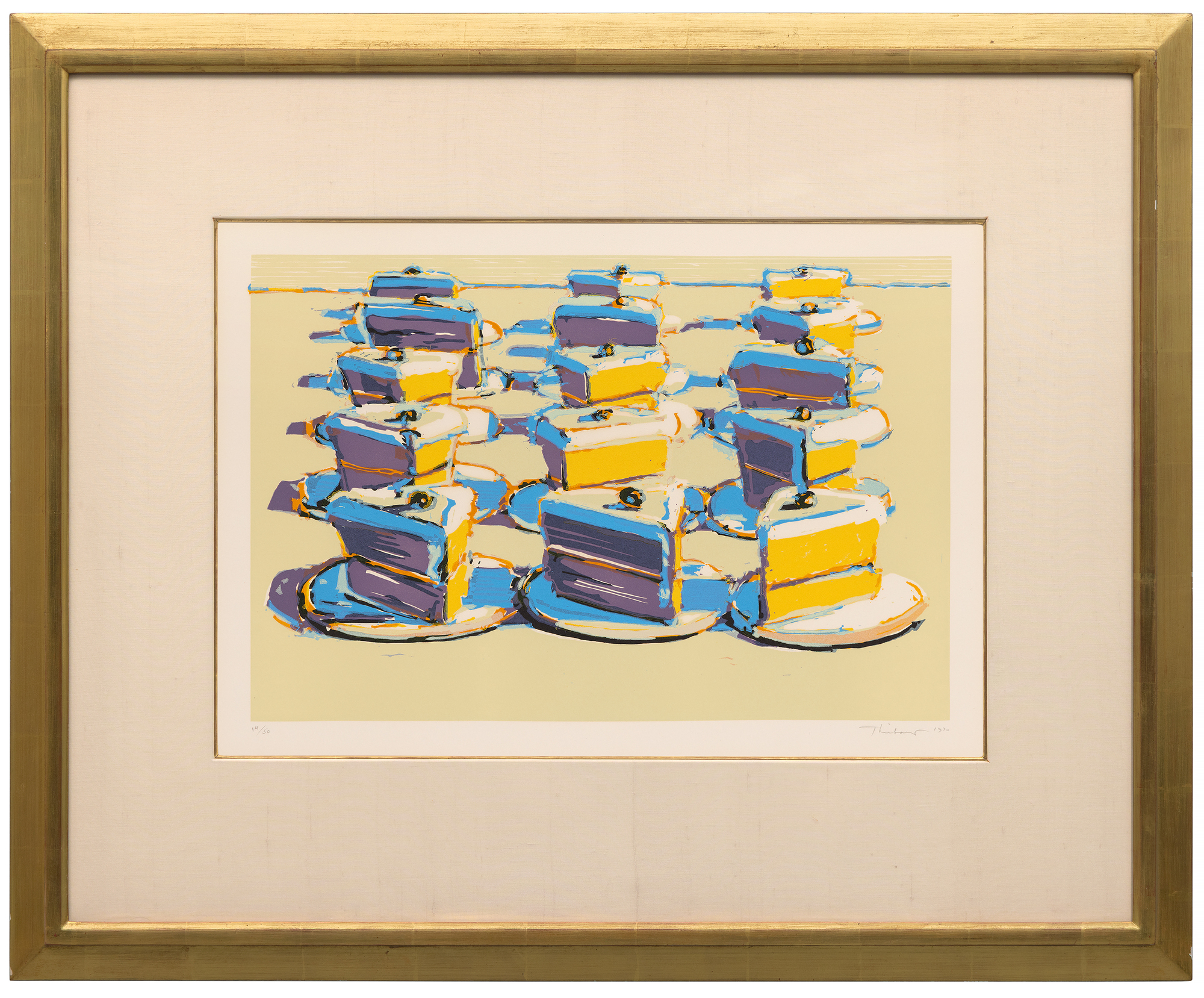
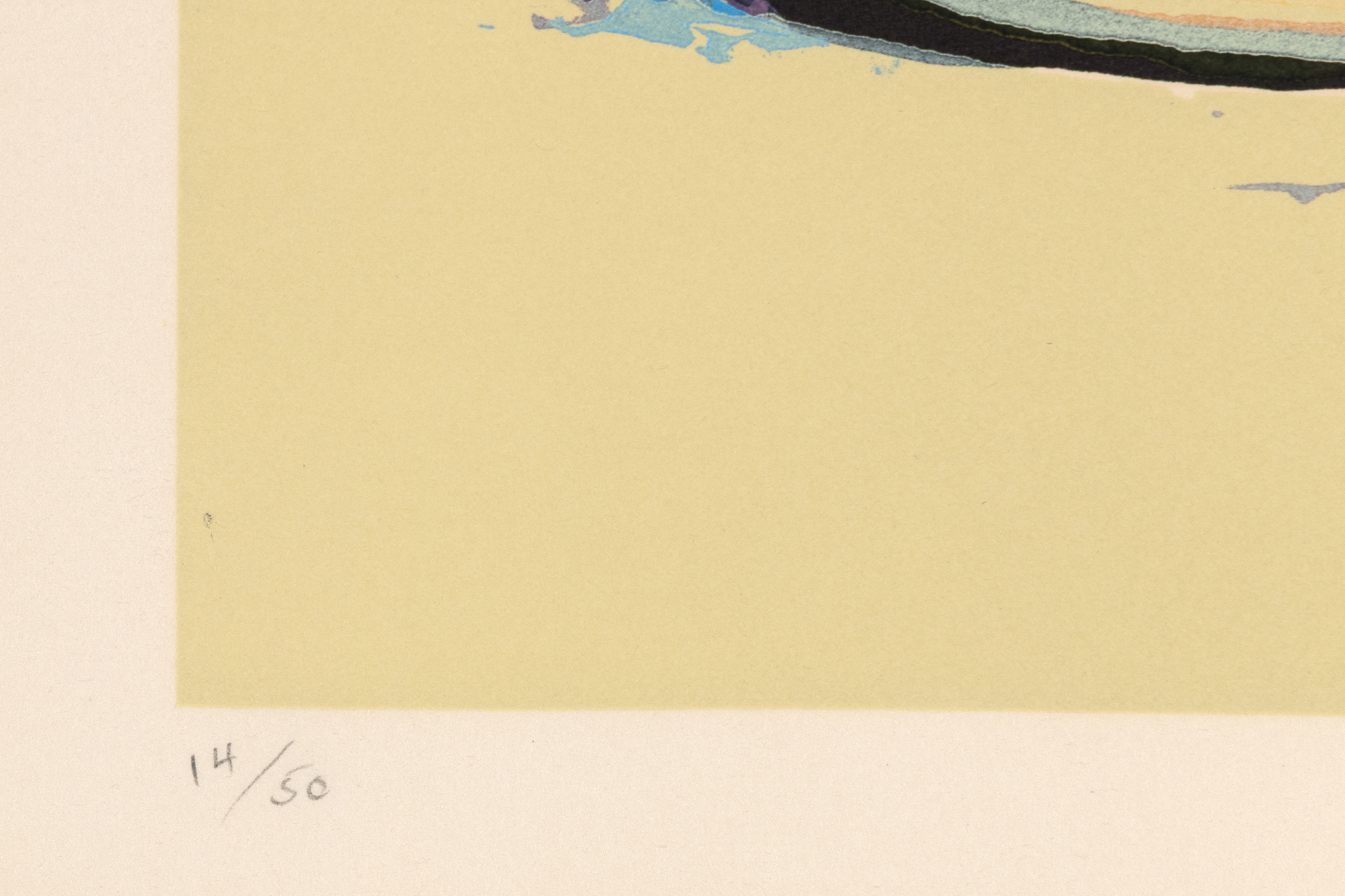


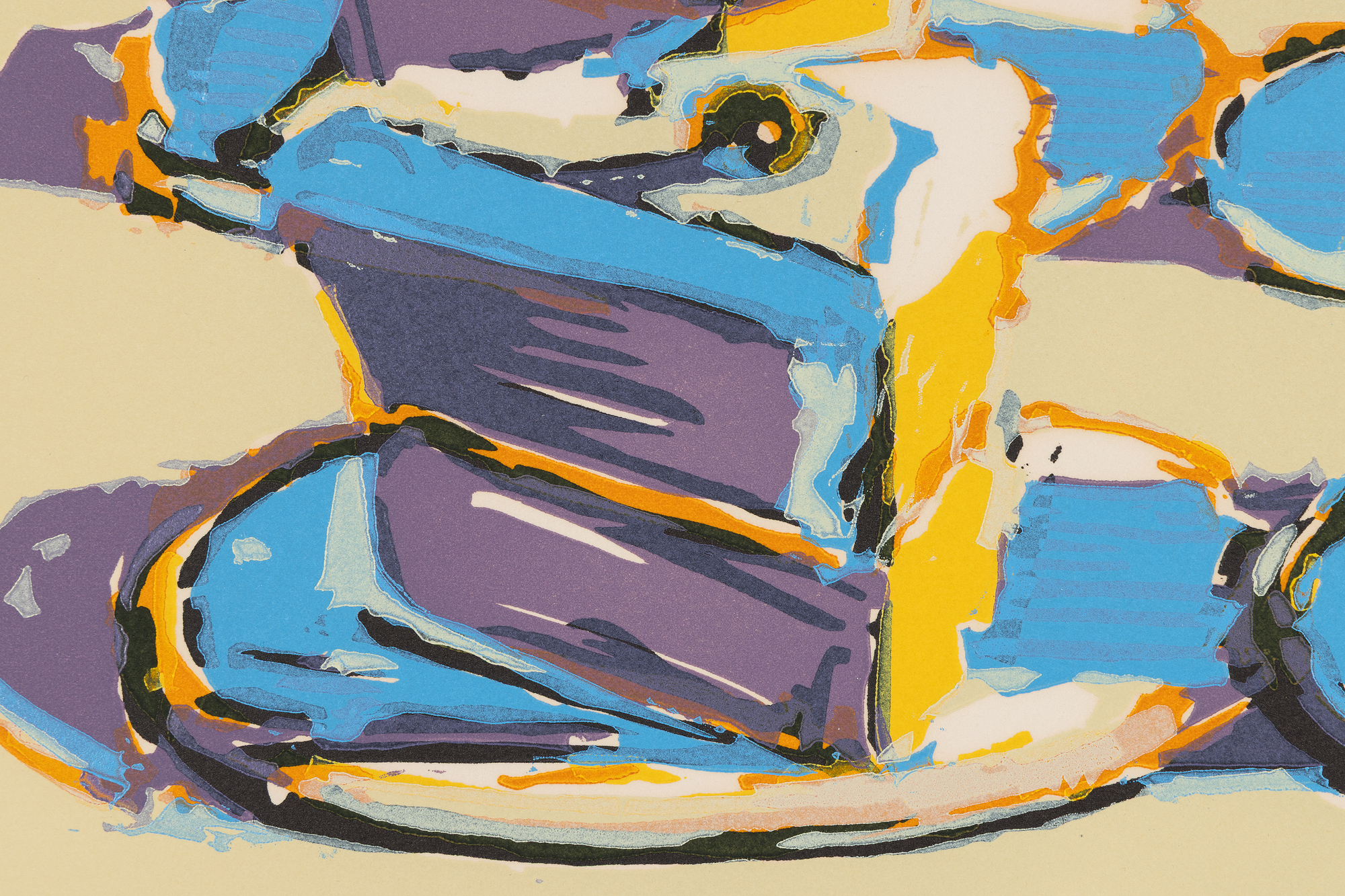
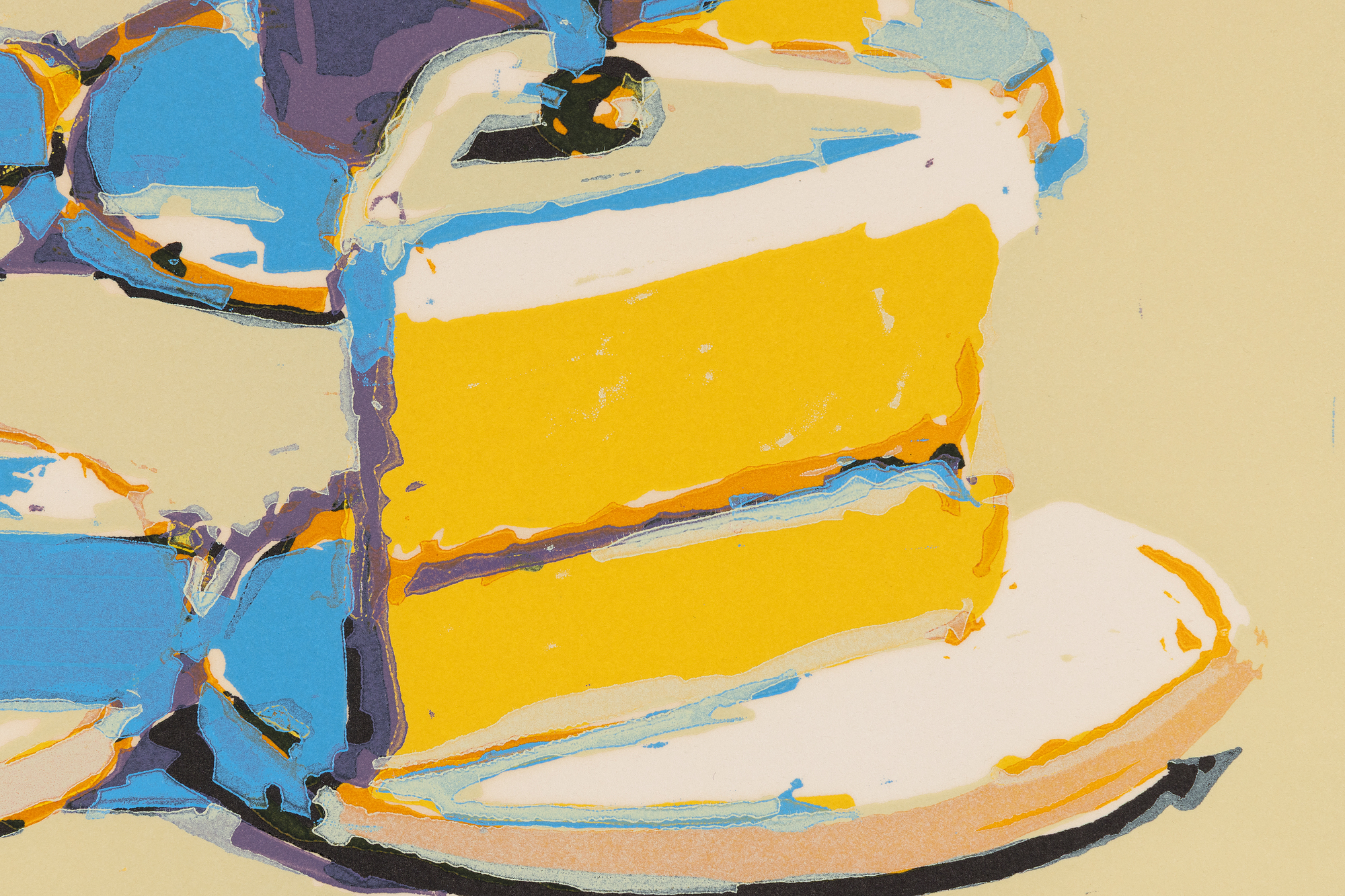
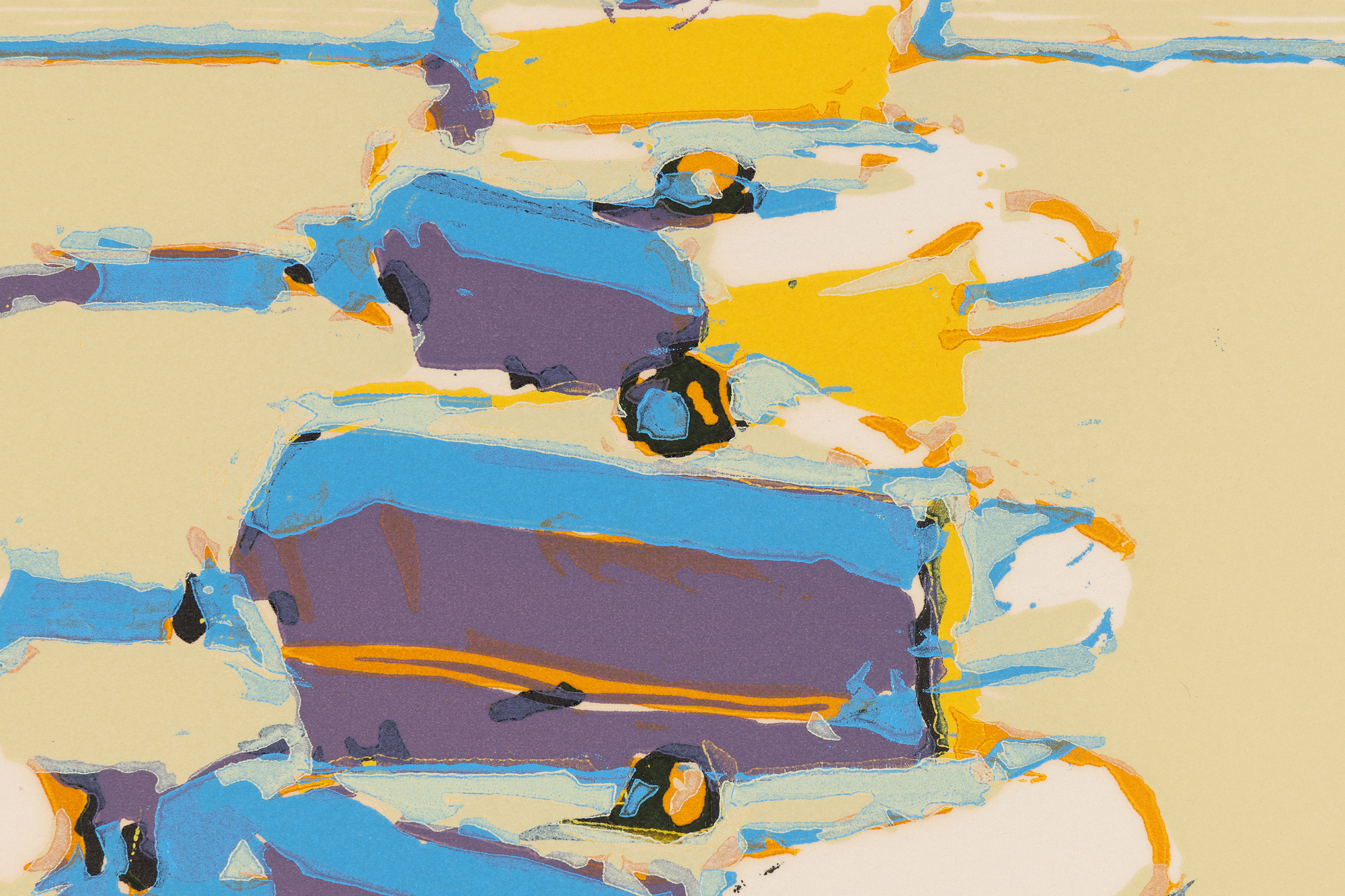
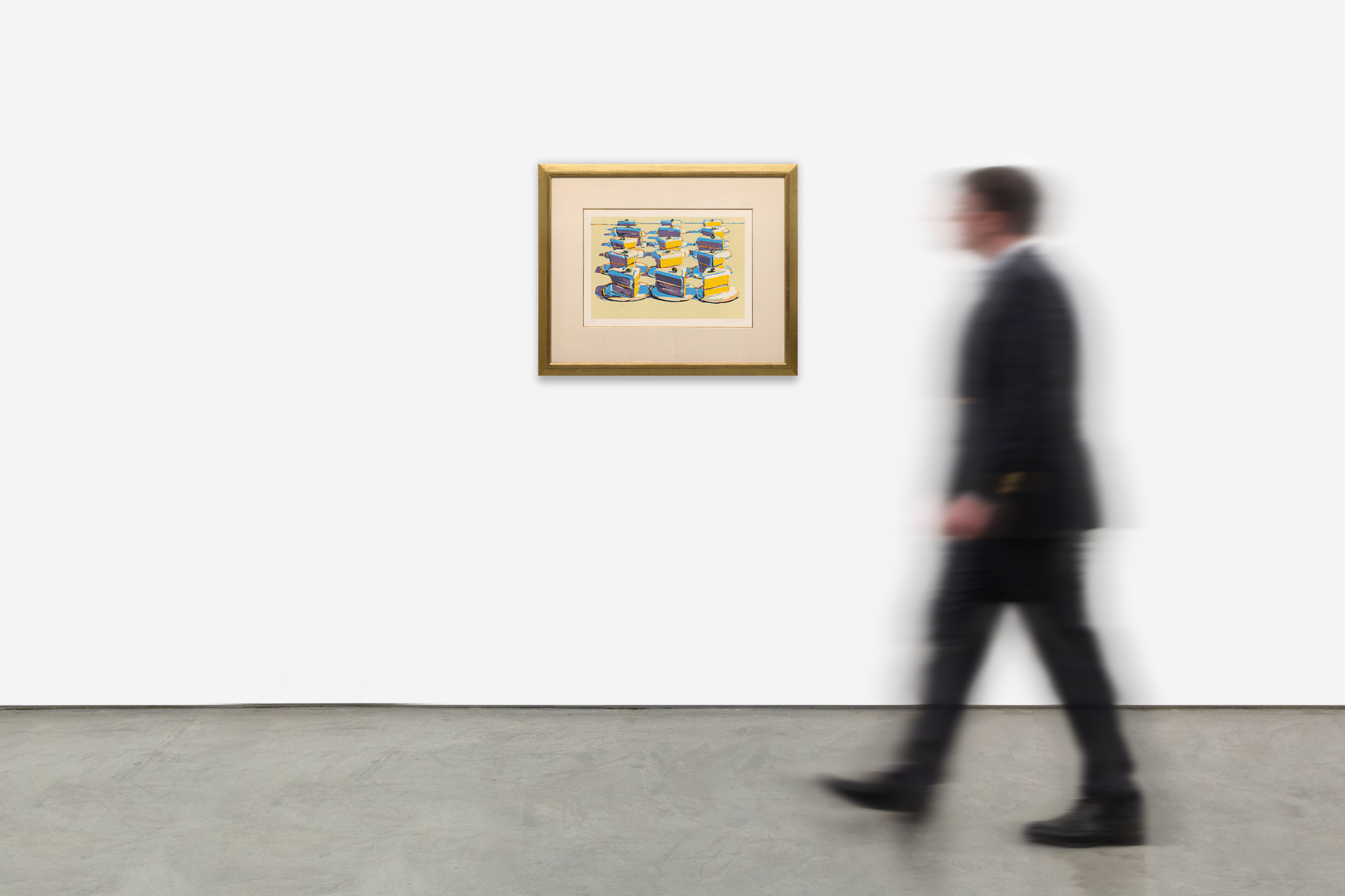

Provenance
Galerie John Berggruen, San FranciscoCollection privée
80,000
Des rangées décadentes de pâtisseries nappées de chocolat sont présentées dans une séquence ordonnée, faisant écho à la logique des étalages de boulangerie tout en transformant une confiserie familière en une icône culturelle. Dans cette apparente uniformité, de subtiles variations de contour, de texture et d'ombrage apparaissent, invitant à porter une attention particulière à l'individualité de chaque forme.
Rendue dans des tons pastel vifs contrebalancés par de riches bruns, jaunes et crèmes, l'image illustre l'utilisation distinctive de la couleur par Thiebaud, en particulier ses ombres infusées de bleus et de pourpres inattendus. Ces choix chromatiques donnent de l'éclat et un sens de la lumière à des sujets ordinaires, les élevant au rang d'objets de contemplation.
À la fois nostalgique et critique, Boston Cremes reflète l'engagement de l'artiste envers la culture de consommation américaine et son équilibre particulier entre le réalisme et la stylisation. Transformant des confiseries familières en symboles durables de la vie américaine, l'œuvre évoque la mémoire tout en remettant en question les frontières entre les beaux-arts et l'imagerie populaire.


